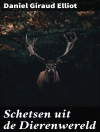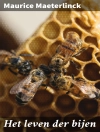Shorebirds are model organisms for illustrating the principles of ecology and excellent subjects for research. Their mating systems are as diverse as any avian group, their migrations push the limits of endurance, and their foraging is easily studied in the open habitats of estuaries and freshwater wetlands. This comprehensive text explores the ecology, conservation, and management of these fascinating birds. Beginning chapters examine phylogenetic relationships between shorebirds and other birds, and cover shorebird morphology, anatomy, and physiology. A section on breeding biology looks in detail at their reproductive biology. Because shorebirds spend much of their time away from breeding areas, a substantial section on non-breeding biology covers migration, foraging ecology, and social behavior. The text also covers shorebird demography, population size, and management issues related to habitat, predators, and human disturbances. Throughout, it emphasizes applying scientific knowledge to the conservation of shorebird populations, many of which are unfortunately in decline.
İçerik tablosu
Preface and Acknowledgments
Part I Evolutionary Relationships, Anatomy and Morphology, and Breeding Biology
1 INTRODUCTION
Diversity and Distribution
Varied Ecomorphology
Diverse Social Systems
Globe- Trotting Migrants
Wetland Dependence
Conservation and Management
Rationale for and Organization of this book
2 SYSTEMATICS, PHYLOGENY, AND PHYLOGEOGRAPHY
Fossil History
A Brief History of Shorebird Systematics
Phylogeography
Hybridization in Shorebirds
Biogeography and Communities
Conservation Implications
3 MORPHOLOGY, ANATOMY, AND PHYSIOLOGY
Skeletal and Muscle System
Integumentary System
Sensory Apparatus, Foraging, and Digestion
Digestive System
Energetics and Thermoregulation
Osmoregulation
Reproductive System
Conservation Implications
4 MATING SYSTEMS
Defining a Mating System
The Role of Ecological Factors
Social versus Gene tic
Relationships
Parental Care Patterns
Evolution of Polyandry
Variance in Reproductive Success
Size Dimorphism
Sex Ratios
Conservation Implications
5 BREEDING BIOLOGY
Philopatry, Breeding Site Fidelity, and Dispersal
Spring Arrival Schedules
Courtship Behavior
Breeding Densities
Selection of a Breeding Site
Eggs
Incubation
Hatching
Chick Growth and Development
Conservation Implications
Part II Nonbreeding Ecology and Demography
6 MIGRATION
Origins and Evolution
Migration Strategies
Physiology of Migration
Hop, Skip, and Jump
Populations and Flyways
Conservation Implications
7 FORAGING ECOL OGY AND HABITAT USE
Diets
Foraging Maneuvers and Habitat Use
Acquiring Energy
Food Availability
Individual Variation
Conservation Implications
8 SHOREBIRDS AS PREDATORS
Shorebird Predators and Their Prey
Predicting Wetland Use
Competition and Food Limitation
Prey Reduction
Community Ecology
Conservation Implications
9 SPATIAL ECOLOGY AND WINTER SOCIAL ORGANIZATION
Quantifying Spatial Distributions
A Range of Social Organization
Roosts
Conservation Implications
10 POPULATION BIOLOGY
Demography
Survival
Productivity
Population Sizes and Trends
Monitoring Programs
Limiting Factors
Human Impacts
Conservation Implications
Part III Management and Conservation
11 HABITAT CONSERVATION AND MANAGEMENT
Decision Making in Wildlife Management
Wetland Conservation
Conservation Planning and Implementation
Wetland Management
Agricultural Lands
Salt Ponds
Sandy, Ocean- Fronting Beaches
Conservation Implications
12 MANAGING PREDATORS
Ethical Considerations and Decision Making
Do Predators Limit Shorebird Populations?
Methods of Control
Conservation Implications
13 MANAGING HUMAN DISTURBANCE
Definitions of Human Disturbance
Characterizing Disturbance
Responses to Disturbance
Managing Disturbance
Conservation Implications
14 EDUCATION AND OUTREACH
Professional Groups
Environmental Education
Ecotourism and Birding Festivals
Books and Online Resources
Conservation Implications
Appendix
Index
Yazar hakkında
Mark A. Colwell, Professor in the Wildlife Department at Humboldt State University, has been studying shorebirds for nearly thirty years.












